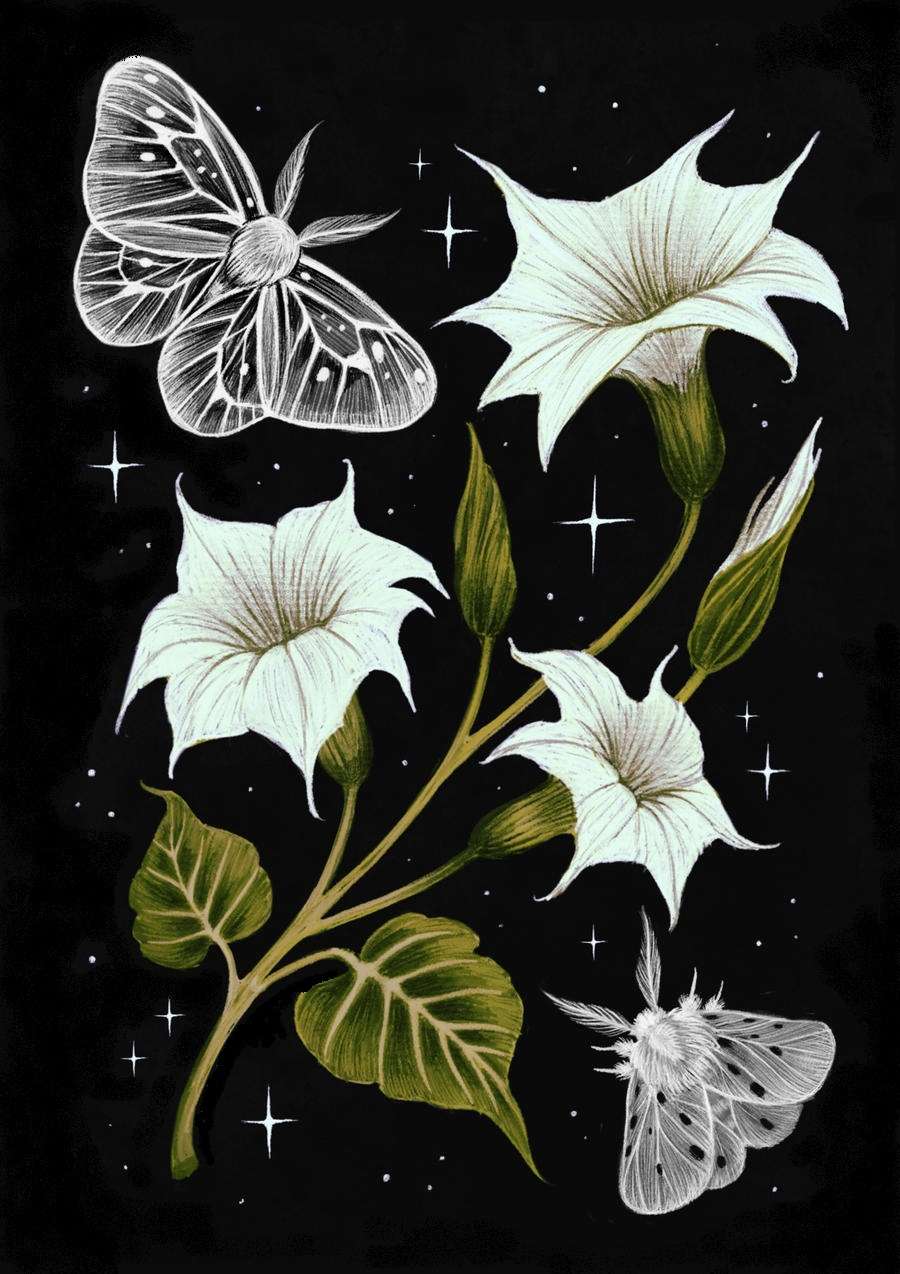
thief left behind
the most precious possession—
a window full of moon
|
Author Notes
The bottom art is a picture of moonflowers. both pictures from Pinterest
ZEN philosophy teaches that our suffering arises from a sense of separation, from feeling alone and afraid. The practice of zen buddhism is a way of dissolving the feeling of separation by experiencing the unity of our own nature and the nature of everything around us. As haiku master Matsuo Bashe wrote, "Learn about the pine, from the pine, and about bamboo from the bamboo". The poet should write about the thing in nature as if the poet writes about himself or herself when the poet and the thing in nature becomes one".
HAIKU is a Japanese short unrhymed poem that uses imagistic language to express the essence of a deeply felt moment in time. It resonates on a deeper level, leaving the reader enlightened and making an insightful connection between the top two lines and the last one, called the SATORI. It originated in the thirteenth century and was mastered a century later by Matsuo Basho. HAIKU uses a dash to pause before the SATORI.. Haiku is about nature and it alludes to a season of the year. The haiku is written from an observer's point of view. In Japan, haiku is written in 17 syllables and three lines ( 5/7/5) but in English is 17 syllables OR LESS because English syllables are longer than Japanese syllables. Avoid capitalization (except proper names) and punctuation. Avoid metaphor and personification, you write about what you can SEE. === click here to read Haiku Society of America, HAIKU EXAMPLES === click here to read Haiku Society of America HAIKU RULES === click here to read why is 5/7/5 OR LESS rule === Modern Haiku
Thank you very much for taking the time to read and review my poem.
Gypsy
"Poetry heals the wounds inflicted by reason." - Novalis
|
|




